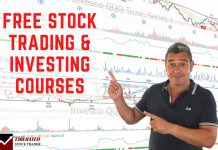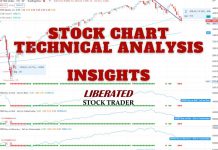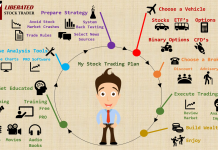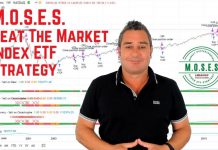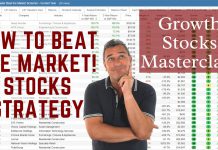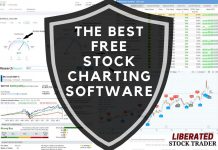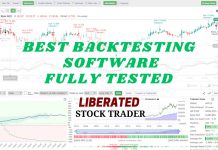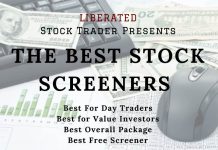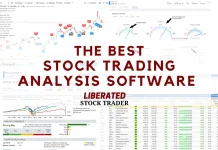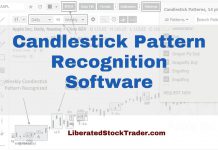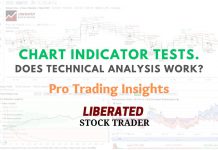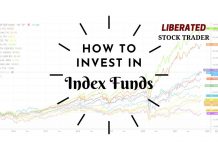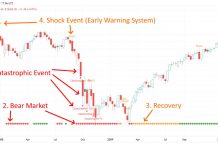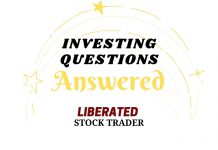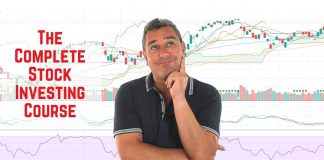ETFs trade like stocks on an exchange and provide flexibility, diversification, and low costs, greatly benefiting investors.
This lesson covers how ETFs work and if they are right for you.
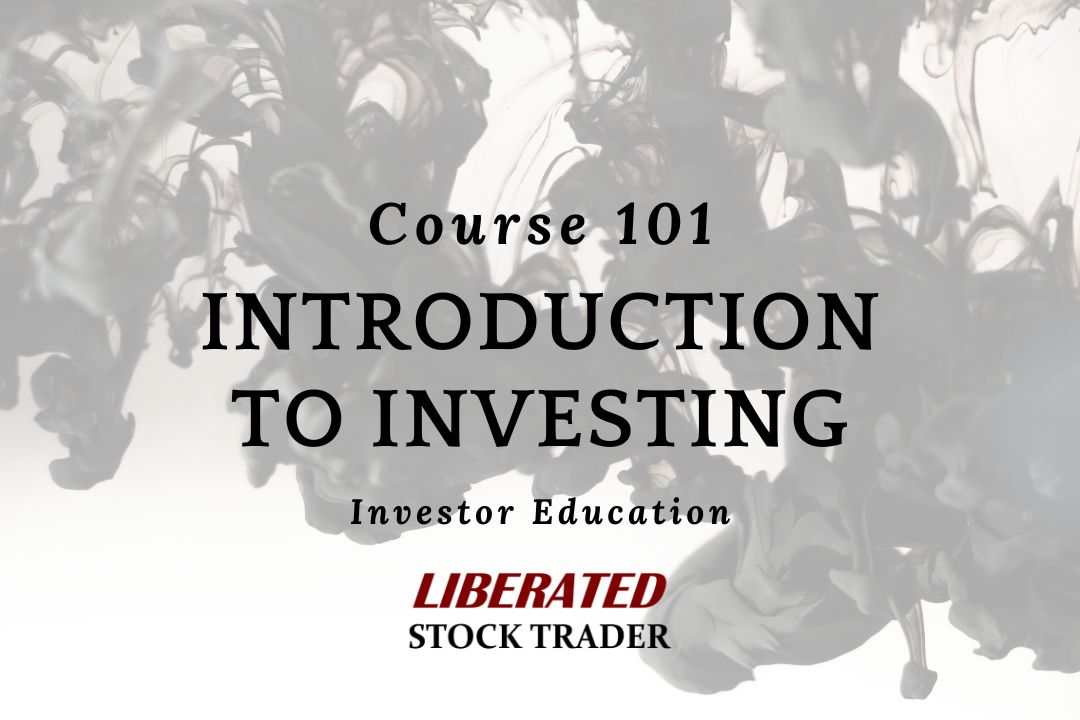
What is an ETF?
An ETF, or Exchange-Traded Fund, is a type of fund that holds assets such as stocks, commodities, or bonds and trades on an exchange. ETFs are similar to mutual funds but differ in a few key ways.
One key difference is that ETFs are traded throughout the day on an exchange, while mutual funds can only be bought or sold at the end of the trading day. This means that ETF prices can fluctuate throughout the day as investors buy and sell them.
The Benefits of ETFs
Exchange-Traded Funds (ETFs) are a simple and effective way to invest in nearly every imaginable market segment, industry, index, or even the global stock market.
There is currently a considerable variety of ETFs that are designed to track the performance of any of the following:
- A stock market index – The S&P500 (Ticker SPY)
- A commodity – Gold (Ticker GLD), Silver (Ticker AGQ)
- An Industry – Global Telecoms Sector (Ticker IXP)
- Size of Stocks – Small Cap Value (Ticker VBR)
- A Country – Russia Bull (Ticker RUSL)
- A Currency – British Pound Trust (Ticker FXB)
- Futures Contracts – (Short Term S&P500 Futures (Ticker VXX)
ETFs trade like a stock on the open market; this is beneficial as it means a good level of liquidity and lower transaction costs. As with any financial transaction, you need to know the character of the instrument you are using.
What are ETFs in investing?
ETFs are a type of investment that can be used in various ways. One way to use them is to build a diversified portfolio of assets. This can help reduce risk by spreading your investments across several different assets. ETFs can also be used to track indices or specific market sectors. This can expose you to a particular market segment without investing in individual stocks.
How do ETFs work?
ETFs are investment funds that hold a basket of assets, such as stocks, commodities, or bonds. They trade on exchanges throughout the day just like individual stocks do. This allows investors to buy and sell them throughout the day. ETFs can be used to build a diversified portfolio or track a particular market segment.
Is an ETF a stock?
No, ETFs are not stocks. They are investment funds that hold a basket of assets such as stocks, bonds, and commodities. ETFs trade on exchanges like stocks but are not the same.
What is the expense ratio in ETFs?
An ETF’s expense ratio is the percentage of the fund’s assets used yearly for management and other expenses. This includes management fees, administrative costs, and marketing expenses. The expense ratio can vary from fund to fund but is typically expressed as a percentage of the fund’s assets.
ETF expense ratios vs. mutual fund expense ratios
ETF expense ratios are typically lower than mutual fund expense ratios. This is because ETFs have lower management fees and other administrative costs. ETFs also tend to be more tax-efficient than mutual funds.
ETFs typically have lower management fees and other administrative costs than mutual funds. This can save you money in the long run. ETFs are also more tax-efficient than mutual funds, saving you even more money.
Do ETFs pay dividends?
Yes, many ETFs pay dividends, a valuable source of income for investors. Dividends are paid from the fund’s assets and can vary monthly or from fund to fund.
What is the difference between an ETF and a mutual fund?
The main difference between ETFs and mutual funds is how they are traded. ETFs are traded throughout the day on an exchange, while mutual funds can only be bought or sold at the end of the trading day. This means that ETF prices can fluctuate throughout the day as investors buy and sell them. On the other hand, mutual fund prices only change once a day after the markets close. Another key difference is that ETFs typically have lower management fees and other expenses than mutual funds. This can save you money in the long run.
The Difference Between ETFs and Mutual Funds is Capital Flow
How to invest in ETFs?
There are many ways to invest in ETFs. One way is to buy ETF shares directly from an ETF provider, an online broker, or a financial advisor. Another way to invest in ETFs is to buy shares of an ETF that a mutual fund company offers. This can be done through your regular mutual fund account. Finally, you can buy ETFs through a brokerage firm by opening a separate account with the brokerage firm or using the firm’s trading platform.
Beat The Market, Avoid Crashes & Lower Your Risks
Nobody wants to see their hard-earned money disappear in a stock market crash.
Over the past century, the US stock market has had 6 major crashes that have caused investors to lose trillions of dollars.
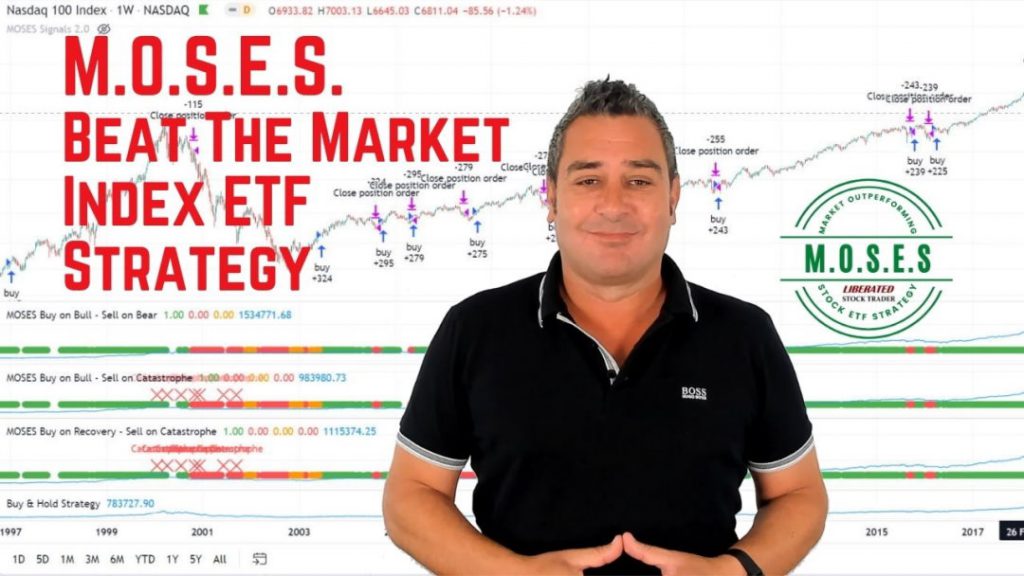
The MOSES Index ETF Investing Strategy will help you minimize the impact of major stock market crashes. MOSES will alert you before the next crash happens so you can protect your portfolio. You will also know when the bear market is over and the new rally begins so you can start investing again.
MOSES Helps You Secure & Grow Your Biggest Investments
★ 3 Index ETF Strategies ★
★ Outperforms the NASDAQ 100, S&P500 & Russell 3000 ★
★ Beats the DAX, CAC40 & EURO STOXX Indices ★
★ Buy & Sell Signals Generated ★
MOSES Helps You Sleep Better At Night Knowing You Are Prepared For Future Disasters
What is a leveraged ETF?
A leveraged ETF is an ETF that uses financial instruments such as futures contracts and options to amplify the return of the underlying asset. Leveraged ETFs can be risky but can lead to higher profits. Leveraged ETFs are unsuitable for all investors, so it is important to understand the risks before investing.
Leveraged investing with ETFs
ETFs are also designed to provide you leverage built-in. If a fund has the term 2X or 3X in the name, it means it will attempt to replicate the movement of the underlying assets but magnify the gains by twice or three times as much.
For example, if you believe the stock market, particularly the S&P 500, will pull back (go down) over the next three months, you may decide to purchase the Rydex 2x Inverse S&P500 ETF (Ticker RSW).
The 2X refers to the fact that the ETF managers seek to emulate a two-times return based on the price movement of the underlying assets.
So, if the market goes down 5% and you own a 2X Inverse ETF, you should expect to profit by 10%.
If you had a standard 2X ETF that was not inverse and the market went down 5%, you would lose 10%
With all ETFs, the caveat is they “seek to emulate,” this means it is not always a perfect science, especially with the bear market funds. Some ETFs do the job better than others. Do your research.
What is an inverse ETF?
An inverse ETF is an ETF that tracks the opposite of the underlying asset. For example, if the underlying asset is a stock index, the inverse ETF will track the opposite direction of the index. This can be a useful investment strategy for hedging purposes or taking advantage of market corrections. However, it is important to understand the risks before investing in an inverse ETF.
What are some popular ETFs?
Some popular ETFs include:
- SPDR S&P 500 ETF (SPY)
- iShares Core S&P 500 ETF (IVV)
- Vanguard Small-Cap ETF (VB)
- iShares Russell 2000 ETF (IWM)
- SPDR Dow Jones Industrial Average ETF (DIA)
- PowerShares QQQ Trust, Series 1 (QQQ)
- iShares MSCI EAFE ETF (EFA)
- iShares Core MSCI Emerging Markets ETF (IEMG)
- Vanguard FTSE Developed Markets ETF (VEA)
- Vanguard FTSE Emerging Markets ETF (VWO)
Are ETFs a good investment?
There is no one-size-fits-all answer to this question, as the appropriateness of ETFs as investments will vary depending on the individual’s situation and needs. However, ETFs can generally be a good investment for many people, as they offer several benefits, including diversification, liquidity, and low fees.
How many ETFs should I own?
The number of ETFs you should own will vary depending on your specific situation and needs. However, owning a few different ETFs is generally a good idea to gain exposure to various asset classes. This will help you to diversify your portfolio and reduce your risk.
Are ETFs index funds?
No, ETFs are not index funds. ETFs are investment vehicles that track an index, while index funds are mutual funds that track an index.
ETFs and mutual funds share many similarities, but the big differences are how you buy and sell shares in the funds, the fund’s costs, and how they are taxed. ETFs trade openly on a stock exchange, and mutual funds are exchanged directly with a fund management company.
Where to buy ETFs?
Some of the best places to buy ETFs include online brokerages like Firstrade, Fidelity, and Charles Schwab, as well as discount brokers like Vanguard and TD Ameritrade. Firstrade offers the broadest number of commission-free ETFs in the industry, so they are well worth investigating.
Can you trade ETFs?
Yes, ETFs can be traded on several exchanges, including the New York Stock Exchange (NYSE) and the Nasdaq. However, not all ETFs are available for trading on all exchanges, so it is important to check before investing.
What is a good strategy for trading ETFs?
A good strategy for trading ETFs is to factor the dollar-cost average into them over time. This means investing a fixed amount of money into ETFs regularly instead of all at once. This will help reduce the risk of investing in ETFs and allow you to take advantage of price fluctuations over time.
Can you day trade ETFs?
Yes, you can day trade ETFs. Day trading ETFs can be profitable, but it’s important to understand the risks involved. Here are a few tips to help you get started:
- Make sure you understand the risks involved in day trading.
- Start small and practice using a demo account before risking real money.
- Choose an ETF that is liquid and has tight spreads.
- Follow your plan, and don’t overtrade!
Please read our full guide to day trading ETFs.
Directional Investing with ETFs
ETFs can also be used to trade in the direction you wish.
BULL ETF – An ETF with the word “Bull” indicated in the name means the fund will be profitable if the underlying assets increase in value.
BEAR ETF – An ETF with the word “Bear” or “Inverse” indicates that you will make a profit if the underlying assets decrease in value.
Exchange-Traded Notes (ETNs)
The ETN is similar to the ETF as it trades openly on the stock exchanges; however, its underlying characteristics differ. It is a hybrid of an ETF combined with the debt ownership of Bonds.
For example, you may hold an ETN to maturity, and at that point, you will be eligible to receive a cash payment equivalent to the principal value of the note.
Are ETFs Worth It?
Yes, ETFs provide huge advantages over mutual funds, including diversification, lower costs, higher liquidity, flexibility, and better profitable long-term compounding. ETFs should be a core component of your diversified portfolio.
Related Articles:
- ETFs vs. Mutual Funds: The Difference Impacts Your Gains
- The Difference Between ETFs and Mutual Funds is Capital Flow
- ETF Investing Strategy: Beat The Market With MOSES
- ETFs vs. Stocks. 7 Reasons ETFs Are Better Than Stocks
ETF PODCAST
The power of Exchange Traded Funds – Good or Bad?
Exchange Traded Funds (ETFs). Should you have them in your portfolio of assets?

